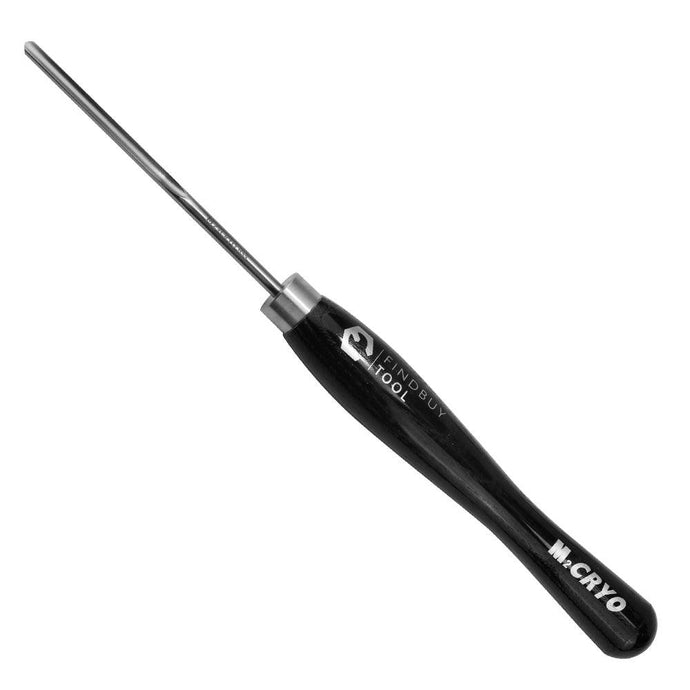Mastering the Craft: The Unique Profile and Versatility of the Spindle Gouge
A spindle gouge is one of the most essential tools in the woodturner's toolkit, prized for its versatility, precision, and the delicate curves it can create on wood. Often used in crafting items like chair legs, table spindles, finials, and various intricate designs, the spindle gouge's profile sets it apart from other types of gouges. Understanding its design and functionality can elevate a woodturner's skill, allowing for greater creativity and control over their projects. This unique tool is known for its shallow flute, ergonomic design, and adaptability to different techniques - each of which contribute to the distinct character of this gouge.
The spindle gouge's design begins with its characteristic shallow flute, which runs along the length of the tool. This shallow curve is intentional; it provides a subtlety in handling that a deep-fluted tool, such as a bowl gouge, would lack. While the bowl gouge's deeper flute makes it ideal for removing large amounts of material in broader shapes, the spindle gouge is crafted to shape smaller, more detailed elements with precision. Its shallow profile allows woodturners to handle delicate tasks without the risk of "digging in" or catching, giving them control over the fine details of their work. This makes the spindle gouge indispensable for projects that require clean, curved cuts and refined edges, such as spindle work, finials, and ornamental shapes.
At the tip, the spindle gouge features a beveled cutting edge that gives it both control and versatility. This bevel allows for smooth transitions and helps to prevent tearing on the wood's surface. The angle of this bevel may vary depending on the intended use, but it's generally ground at an angle between 35 and 45 degrees. This bevel angle is what gives the spindle gouge its signature "slicing" cut, gliding easily along the wood surface. Unlike a chisel or skew, which can be harder to control in tight or rounded areas, the spindle gouge's profile allows it to maintain a clean edge without snagging or creating rough patches. Woodturners can adjust this bevel angle to suit their personal style or specific project requirements, making the tool a truly customizable asset.
In addition to its unique shape, the spindle gouge also provides exceptional ease of use for novice and seasoned woodturners alike. Thanks to its shallow flute and beveled cutting edge, it requires a relatively shallow learning curve, especially compared to other tools used in turning. When properly handled, the spindle gouge performs clean cuts with minimal resistance, even on complex curves. Its design also allows for a variety of techniques: it can be used in a scraping motion, for a lighter touch on softer woods, or with a more aggressive approach on harder materials. This versatility makes it an ideal tool to master early on for beginners, who can practice different cutting techniques without risking major mishaps.
Woodturners value the spindle gouge for its ability to produce different shapes without needing to switch tools. The gouge can create delicate beads, coves, V-grooves, and even straight lines, all with just a subtle adjustment to the angle and pressure applied. To achieve these designs, a woodturner typically maneuvers the gouge by rotating it slightly or changing the tool rest's height. Its profile and cutting edge are forgiving enough to allow minor adjustments, ensuring the tool's usability across a wide range of cuts and forms. Once mastered, these adjustments become second nature, enabling the woodturner to focus on the creative aspect of the process rather than the mechanics of tool handling.
Despite its adaptability, proper maintenance is key to keeping a spindle gouge functional and sharp. Routine sharpening is essential to retain its edge and prevent chipping or dullness. A bench grinder or honing tool can be used to keep the beveled edge sharp and ready for fine work. Woodturners can experiment with different bevel angles as they refine their technique and style, finding a profile that best suits their needs. The gouge's steel quality is also essential, with high-speed steel (HSS) being preferred for its durability and resistance to overheating during sharpening.
The spindle gouge, while appearing simple, is a sophisticated tool designed for intricate and controlled woodturning. It embodies the balance of precision, versatility, and adaptability, making it a favorite among woodturners. With practice and a focus on technique, the spindle gouge's unique profile opens doors to endless creative possibilities, enhancing both the process and the artistry of woodturning.


